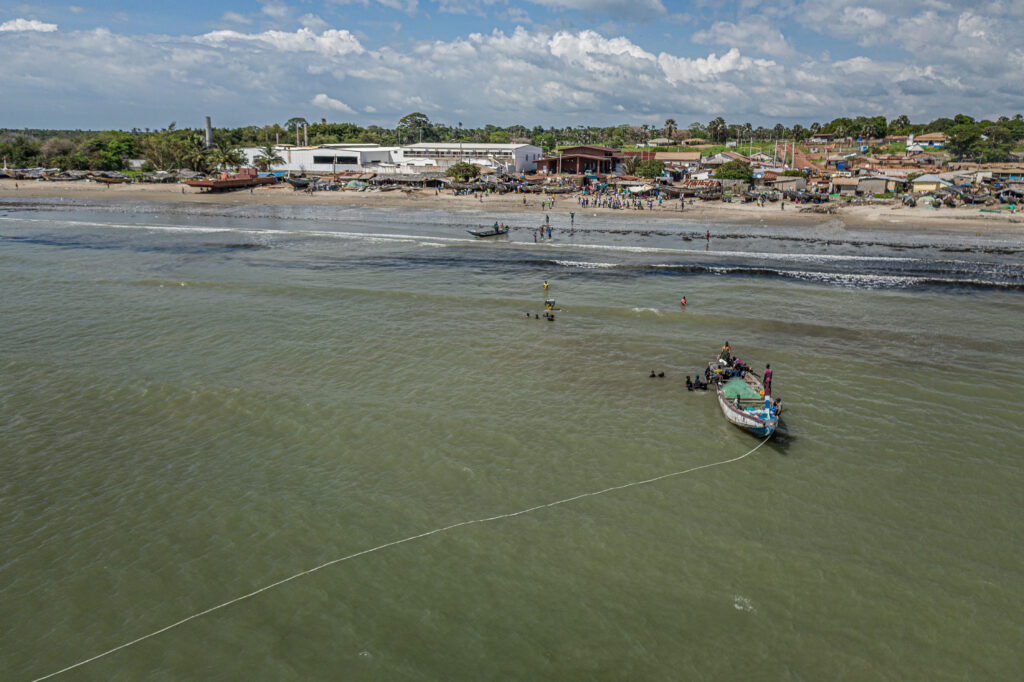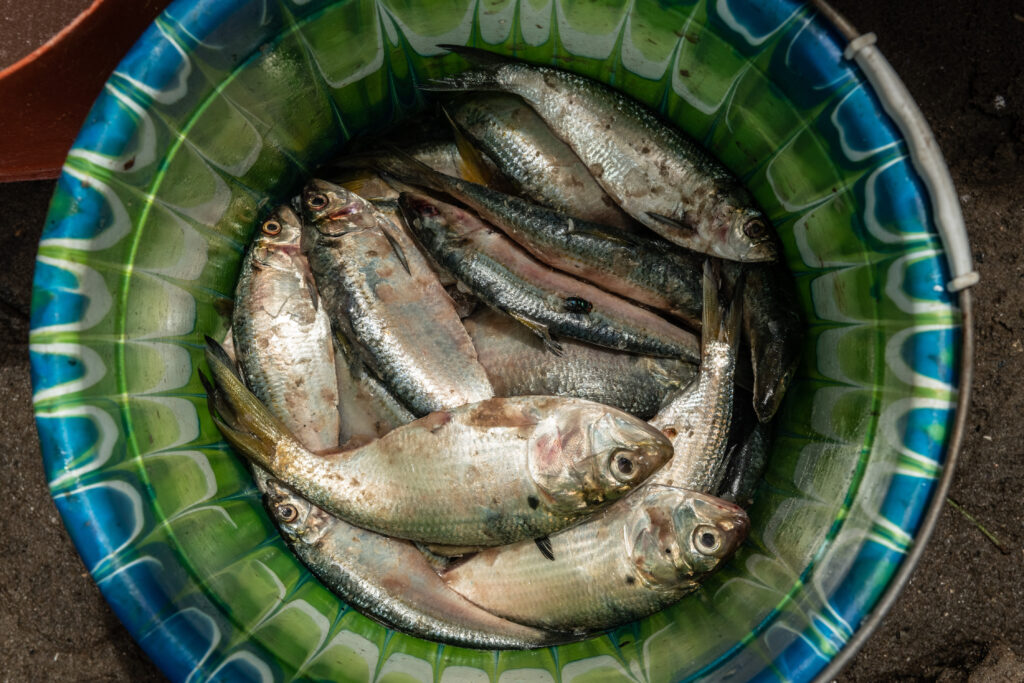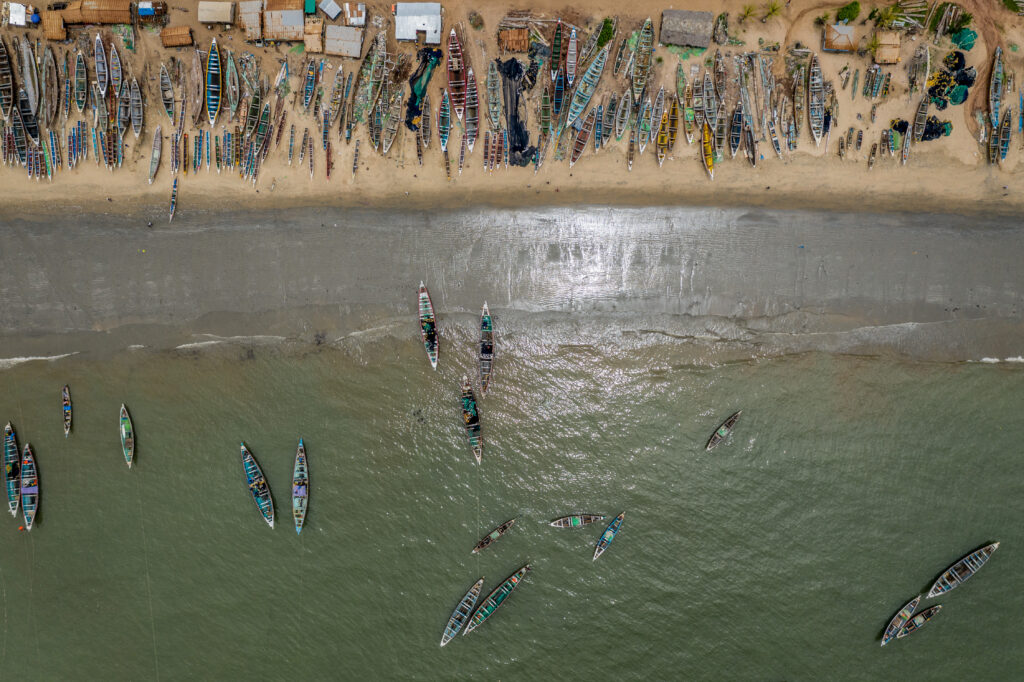Fish Farming Is Feeding the Globe. What’s the Cost for Locals?
In the small coastal country of The Gambia, an exploding industry has led to big economic promises and a steep environmental price.
The New Yorker
Executive Producer: Ian Urbina
Producer: Ryan Ffrench
With: Mustapha Manneh, Ahmed Manjang, Captain Peter Hammarstedt
Cinematographer and Drone Pilot: Fábio Nascimento
Editor: Michael Ward
Field Producer / 2nd Camera: Charlotte Kaufman
Composer: Fábio Nascimento
Colorist: George Costakis, Piñata Post
Sound Mixer: Noah Woodburn
www.theoutlawocean.com
Gunjur, a town of some fifteen thousand people, sits on the Atlantic coastline of southern Gambia, the smallest country in mainland Africa. In the spring of 2017, the town’s white-sand beaches were full of activity. Fishermen steered long, vibrantly painted wooden canoes, known as pirogues, toward the shore, where they transferred their still-fluttering catch to women waiting at the water’s edge. The fish were hauled off to nearby open-air markets in rusty metal wheelbarrows or in baskets balanced on heads. Small boys played soccer as tourists watched from lounge chairs. At nightfall, the beach was dotted with bonfires. There were drumming and kora lessons; men with oiled chests grappled in traditional wrestling matches.
But just five minutes inland was a more tranquil setting—the wildlife reserve known as Bolong Fenyo. Established in 2008, the reserve was meant to protect seven hundred and ninety acres of beach, mangrove swamp, wetland, and savanna, as well as an oblong lagoon. A half-mile long and a few hundred yards wide, the lagoon had been a lush habitat for a remarkable variety of migratory birds, as well as humpback dolphins, epauletted fruit bats, Nile crocodiles, and callithrix monkeys. A marvel of biodiversity, the reserve was integral to the region’s ecological health—and, with hundreds of birders and other tourists visiting each year, to its economic health, too.
But on the morning of May 22nd the Gunjur community woke to discover that the Bolong Fenyo lagoon had turned a cloudy crimson overnight. Dead fish floated on the surface. “Everything is red,” one local reporter wrote, “and every living thing is dead.” Some residents wondered if the apocalyptic scene was an omen delivered in blood. More likely, water fleas in the lagoon had turned red in response to sudden changes in pH or oxygen levels. Soon, there were reports that many of the area’s birds were no longer nesting near the lagoon.
A few residents filled bottles with the tainted water and brought them to the one person in town they thought might be able to help—Ahmed Manjang. Born and raised in Gunjur, Manjang was living in Saudi Arabia, where he worked as a microbiologist. He happened to be home visiting his extended family, and he collected his own samples from the lagoon, sending them to two laboratories in Germany for analysis. The results were alarming. The water contained double the amount of arsenic and forty times the amount of phosphates and nitrates deemed safe. Pollution at these levels, Manjang concluded, could have only one source: illegally dumped waste from a Chinese fish-processing plant called Golden Lead, which operates on the edge of the reserve. That summer, Gambian environmental authorities filed a lawsuit against the plant, and reportedly reached a settlement for twenty-five thousand dollars, an amount that Manjang described as “paltry and offensive.” The plant’s license was briefly revoked, but operations soon started back up. When I reached him last month, Manjang had relocated to Gunjur to take a teaching job at the local university. By then, it wasn’t just the lagoon that had been transformed; the coastal waters had also turned a reddish brown.
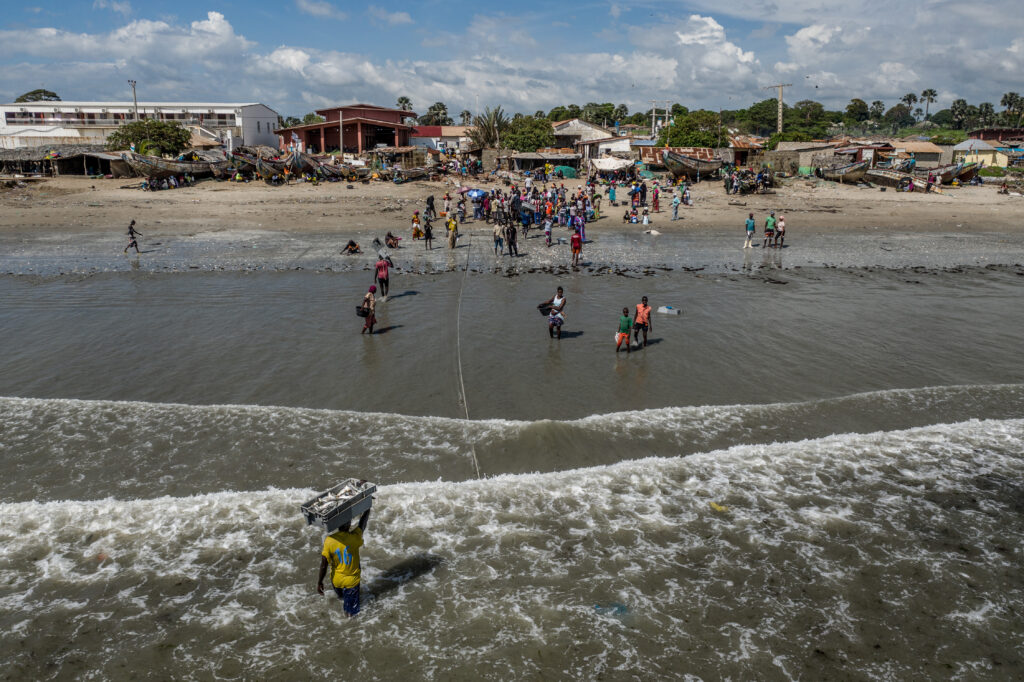
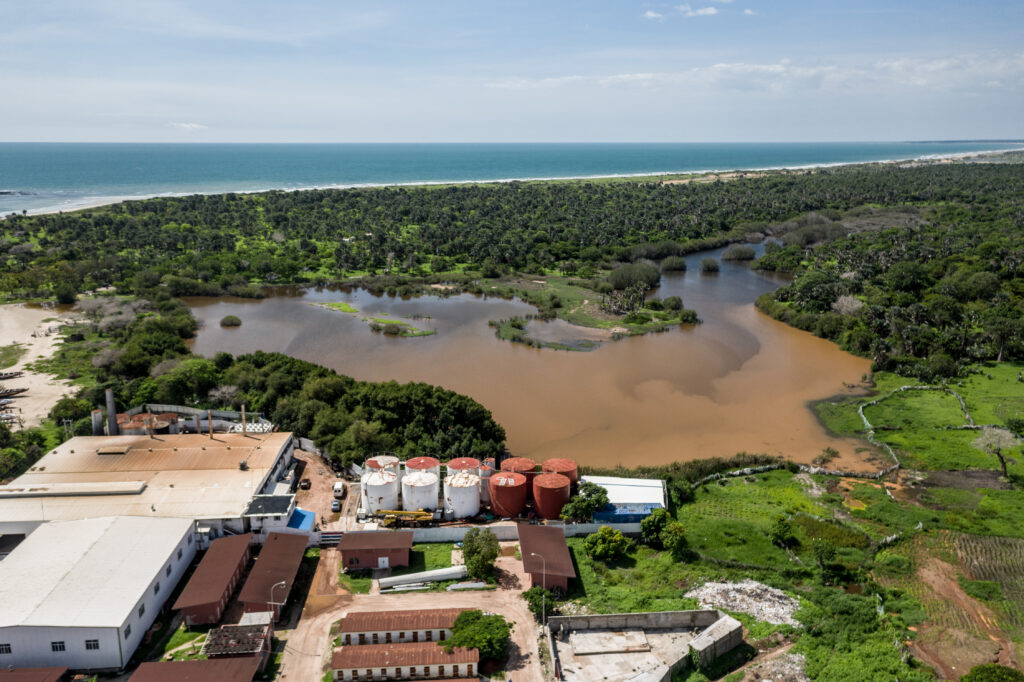
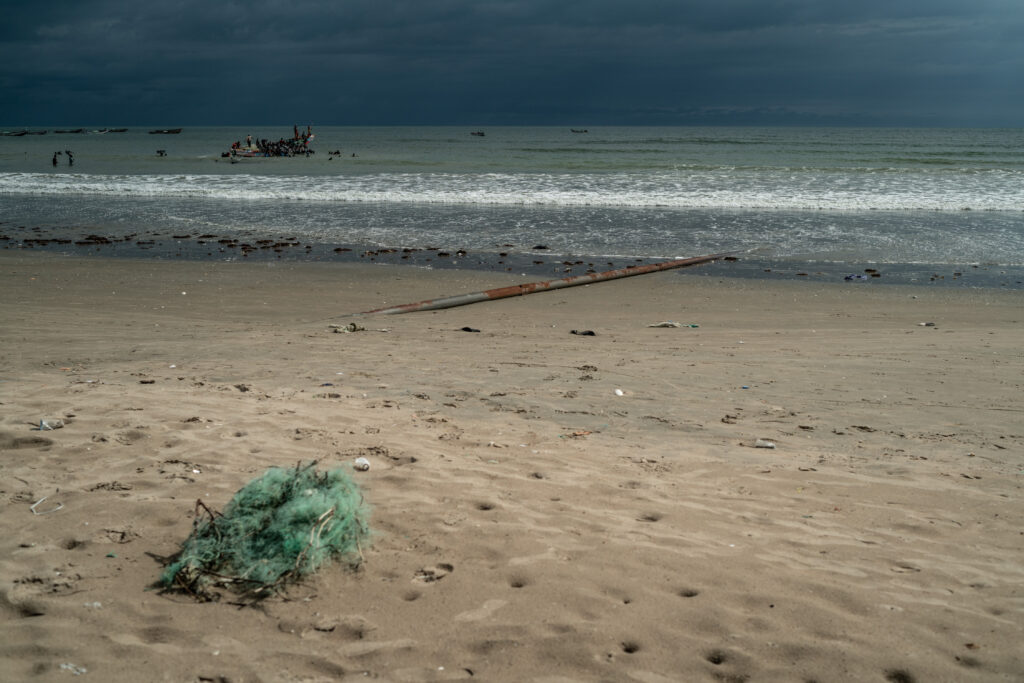
Global demand for seafood has doubled since the nineteen-sixties. Our appetite for fish has outpaced what we can sustainably catch: more than eighty per cent of the world’s wild fish stocks have collapsed or are unable to withstand more fishing. Aquaculture has emerged as an alternative—a shift, as the industry likes to say, from capture to culture.
The fastest-growing segment of global food production, the aquaculture industry is worth a hundred and sixty billion dollars and accounts for roughly half of the world’s fish consumption. And even as retail seafood sales at restaurants and hotels have plummeted during the pandemic, the dip has been offset in many places by the increase in people cooking fish at home. The United States imports eighty per cent of its seafood, much of which is farmed. Often, it comes from China, by far the world’s largest producer, where fish are grown in sprawling landlocked pools or in offshore pens spanning several square miles.
Aquaculture has existed in rudimentary forms for centuries, and it does have some clear benefits over catching fish in the wild. It reduces the problem of bycatch—the thousands of tons of unwanted fish that are swept up each year by the gaping nets of industrial fishing boats, only to suffocate and be tossed back into the sea. And farming bivalves (oysters, clams, and mussels) promises a cheaper form of protein than traditional fishing for wild-caught species. In India and other parts of Asia, these farms have become a crucial source of jobs, especially for women. Aquaculture makes it easier for wholesalers to insure that their supply chains are not indirectly supporting illegal fishing, environmental crimes, or forced labor. There’s potential for environmental benefits, too: with the right protocols, aquaculture uses less freshwater and arable land than most animal agriculture. The carbon emissions produced per pound of fish are a quarter of those produced per pound of beef, and two-thirds of those produced per pound of pork.
Still, there are also hidden costs. When millions of fish are crowded together, they generate a lot of waste. If they’re penned in shallow coastal pools, the solid waste turns into a thick slime on the seafloor, smothering plants and animals. Nitrogen and phosphorus levels spike in surrounding waters, causing algal blooms, killing wild fish, and driving away tourists. Bred to grow faster and bigger, the farmed fish sometimes escape their enclosures and threaten indigenous species.
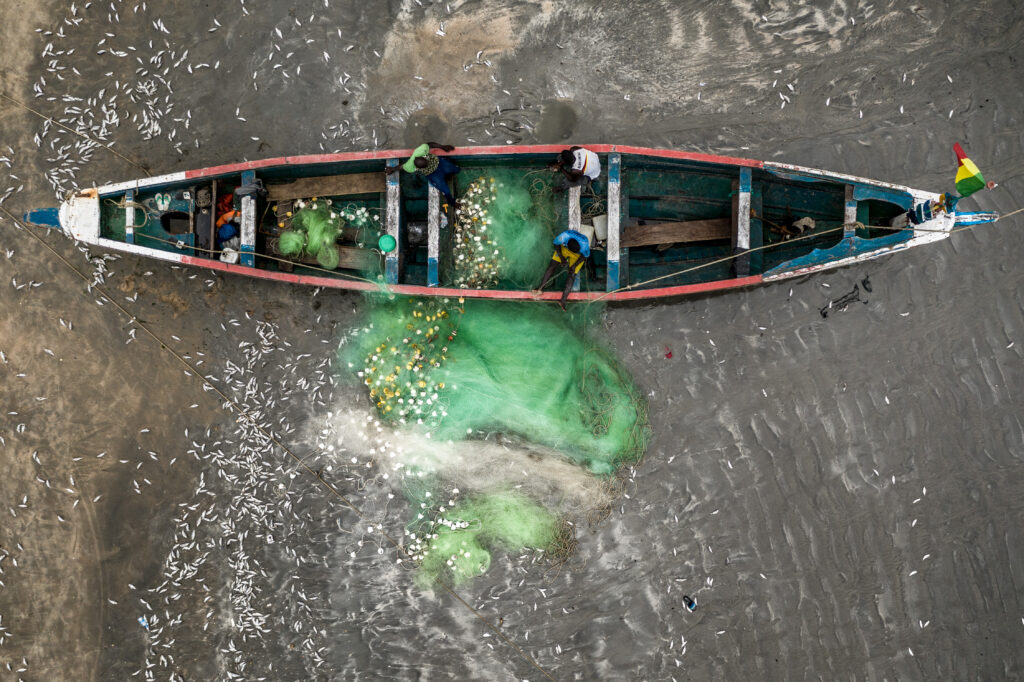
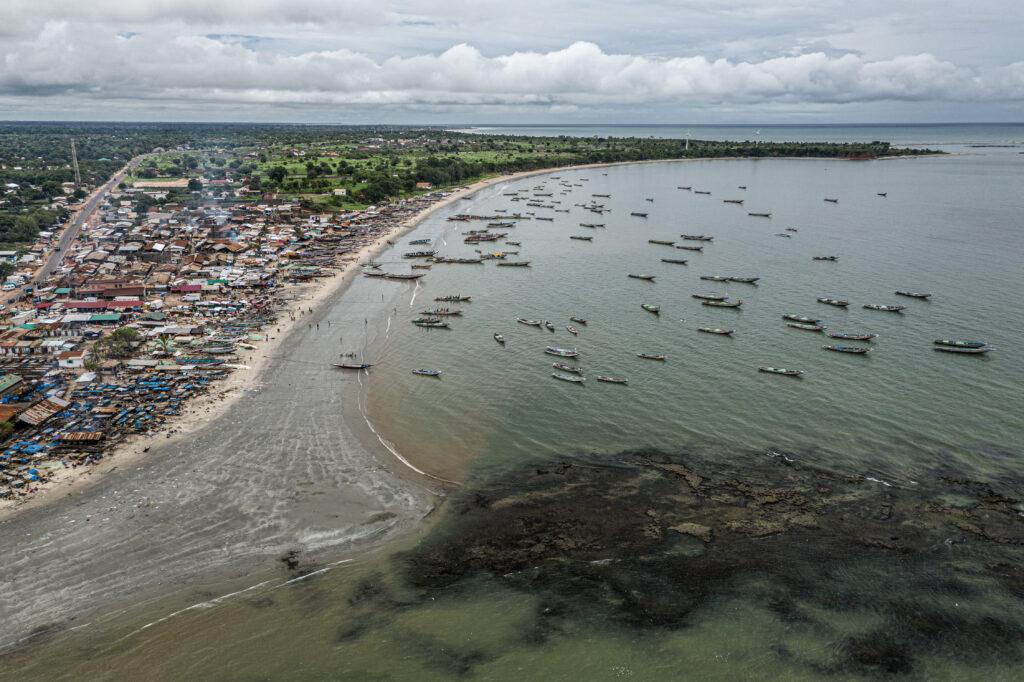
In Gambia, the nine miles of water closest to the shore have been reserved for local fishermen, but on the days leading up to the patrol dozens of foreign trawlers were visible from the beach. Sea Shepherd’s mission was to find and board trespassers or other vessels engaged in prohibited behaviors, such as shark finning and the netting of juvenile fish. In the past few years, the group has also worked with governments in Gabon, Liberia, Tanzania, Benin, and Namibia. Some fisheries experts have criticized these collaborations as publicity stunts, but the patrols have led to the arrest of more than sixty illegal fishing ships.
Barely a dozen local government officials had been informed of the Sea Shepherd mission. To avoid being spotted by fishermen, the group used several small speedboats to spirit a dozen heavily armed Gambian Navy and fisheries officers out to the Sam Simon after dark. We were joined by two gruff private-security contractors from Israel, who were training the Gambian officers in military procedures for boarding ships. While we waited on the moonlit deck, one of the Gambian guards, dressed in a crisp blue-and-white camouflage uniform, showed me a music video on his phone by one of Gambia’s best-known rappers, ST Brikama Boyo. He translated the lyrics of a song, called “Fuwareyaa,” which means “poverty”: “People like us don’t have meat, and the Chinese have taken our sea from us in Gunjur, and now we don’t have fish.”
Three hours after we embarked, the foreign ships had all but vanished. Sensing that word about the operation had got out, the captain changed plans. Instead of focussing on the smaller unlicensed ships close to land that were mostly from neighboring African countries, he would conduct surprise at-sea inspections of fifty-five industrial ships that were licensed to be in Gambian waters. It was a bold move: officers would be boarding larger, well-financed ships, many of them with political connections in China and Gambia.
Less than an hour later, we pulled alongside the Lu Lao Yuan Yu 010, a hundred-and-thirty-four-foot electric-blue trawler streaked with rust, operated by Qingdao Tangfeng Ocean Fishery, a Chinese company that supplies Gambia’s fish-meal plants. A team of eight Gambians from the Sam Simon boarded the ship, AK-47s slung over their shoulders. One nervous officer forgot the bullhorn he was assigned to carry. Another officer’s sunglasses fell into the sea as he leaped onto the deck.
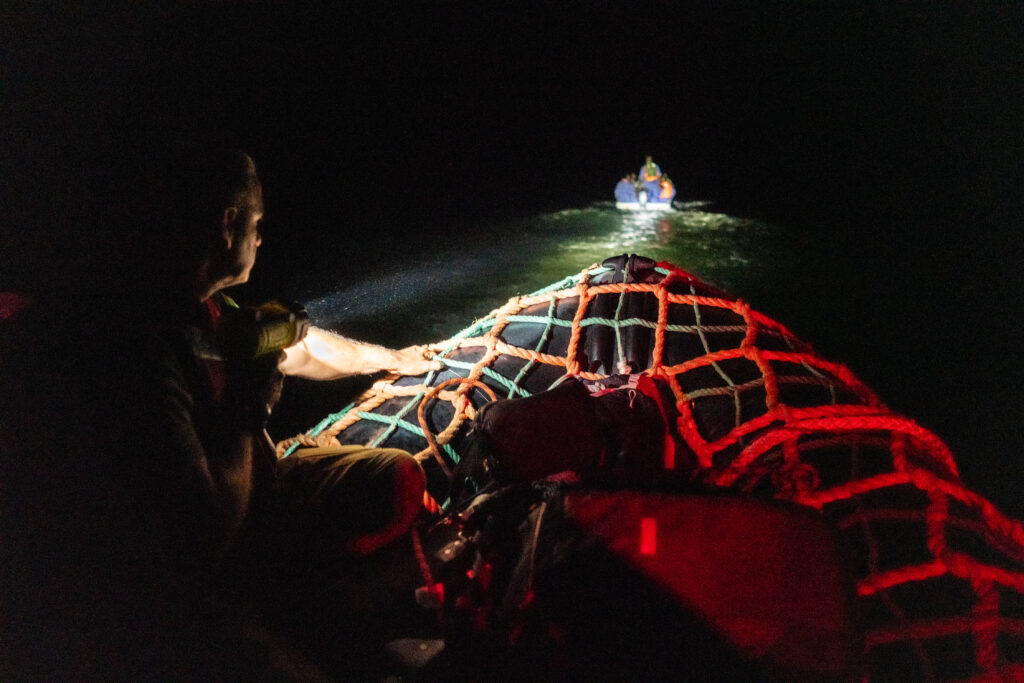
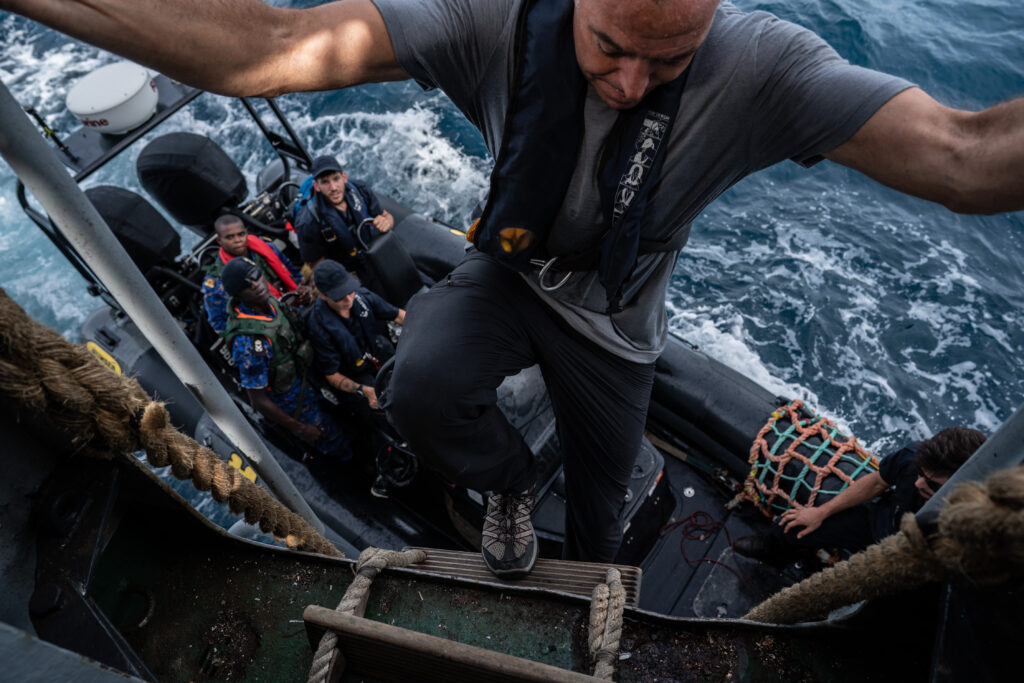
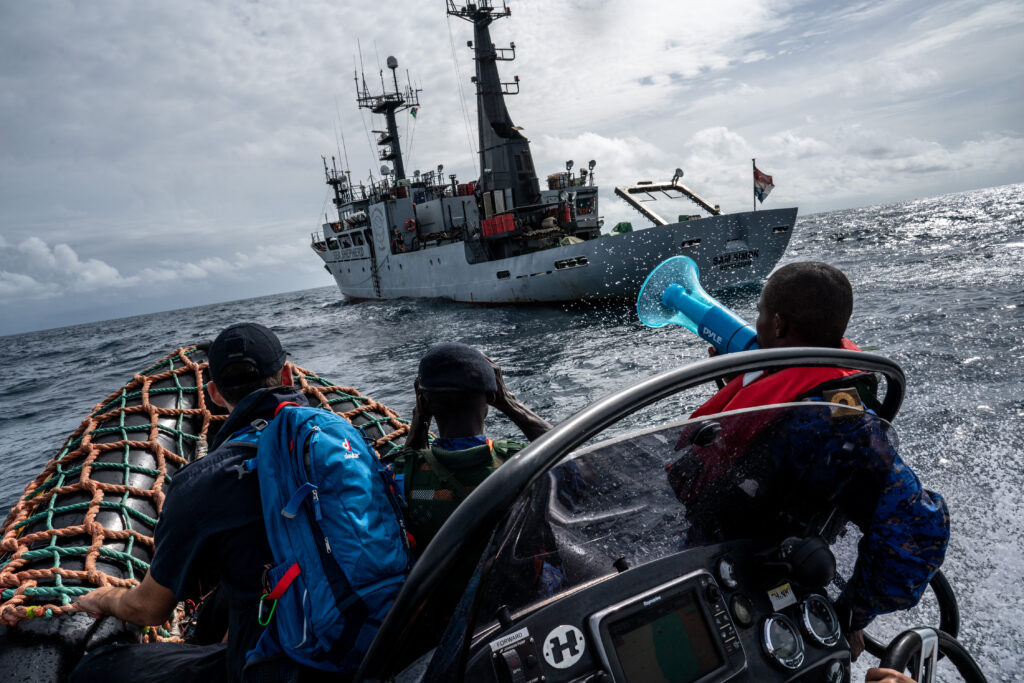
Onboard the Lu Lao Yuan Yu 010 were seven Chinese officers and a crew of four Gambians and thirty-five Senegalese. The Gambian team soon began grilling the ship’s captain, a short man named Qiu Shenzhong, who wore a shirt smeared with fish guts. Belowdecks, ten African crew members in yellow gloves and stained smocks stood shoulder to shoulder on either side of a conveyor belt, sorting bonga, mackerel, and whitefish into pans. Nearby, floor-to-ceiling rows of freezers were barely cold. Roaches scurried up the walls and across the floor, where some fish had been stepped on and squashed.
I spoke to one of the workers, who told me that his name was Lamin Jarju. Though no one could hear us above the deafening ca-thunk, ca-thunk of the machinery, he stepped away from the line and lowered his voice. The ship, he told me, had been fishing within the nine-mile zone until the Captain received a radioed warning from nearby ships that a policing effort was under way. When I asked Jarju why he was willing to reveal the ship’s violation, he said, “Follow me,” and led me up two levels to the roof of the wheel room, the Captain’s office. He showed me a large nest of crumpled newspapers, clothing, and blankets, where he said several crew members had been sleeping for the past several weeks, ever since the Captain hired more workers than the ship could accommodate. “They treat us like dogs,” Jarju said.
When I returned to the deck, an argument was escalating. A Gambian Navy lieutenant named Modou Jallow had discovered that the ship’s fishing logbook was blank. All captains are required to keep detailed accounts of where they go, how long they work, what gear they use, and what they catch. Jallow had issued an arrest order for the infraction and was yelling in Chinese. Captain Qiu was incandescent with rage. “No one keeps that!” he shouted back.
He was not wrong. Paperwork violations are common, especially on fishing boats along the coast of West Africa, where countries don’t always provide clear guidance about their rules. Captains tend to view logbooks as weapons of bribe-seeking bureaucrats or as tools of conservationists bent on closing fishing grounds. But scientists rely on proper records to determine fishing locations, depths, dates, gear descriptions, and “effort”—how long nets or lines are in the water relative to the quantity of fish they ensnare. Without such logs, it’s almost impossible to determine how quickly Gambia’s waters are being depleted.
Jallow ordered the ship back to port, and the argument moved from the upper deck down to the engine room, where Qiu claimed that he needed a few hours to fix a pipe—enough time, the Sam Simon crew suspected, for him to contact his bosses in China and ask them to call in a favor with high-level Gambian officials. Jallow, sensing a stalling tactic, smacked Qiu in the face. “You will make the fix in an hour!” Jallow shouted, grabbing the Captain by the throat. “And I will watch you do it.” Twenty minutes later, the Lu Lao Yuan Yu 010 was en route to shore.
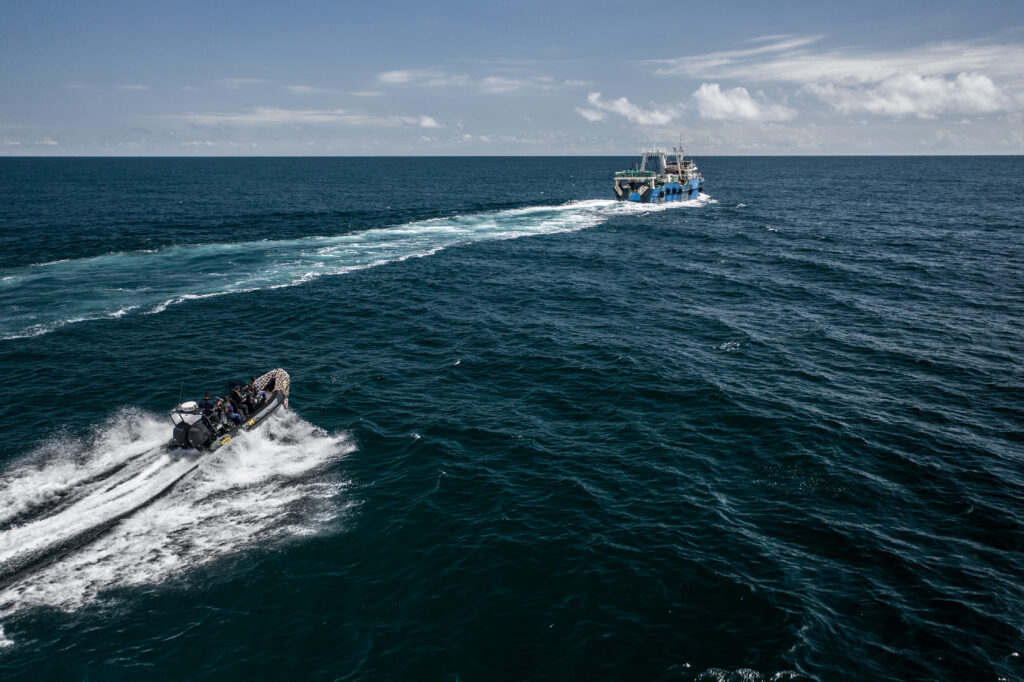
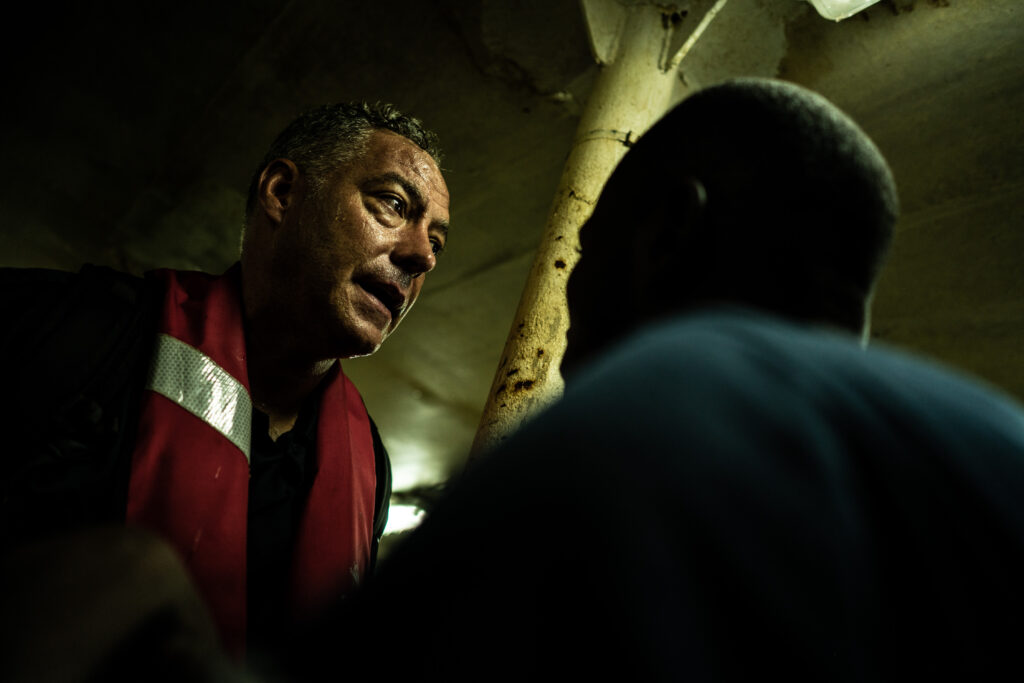
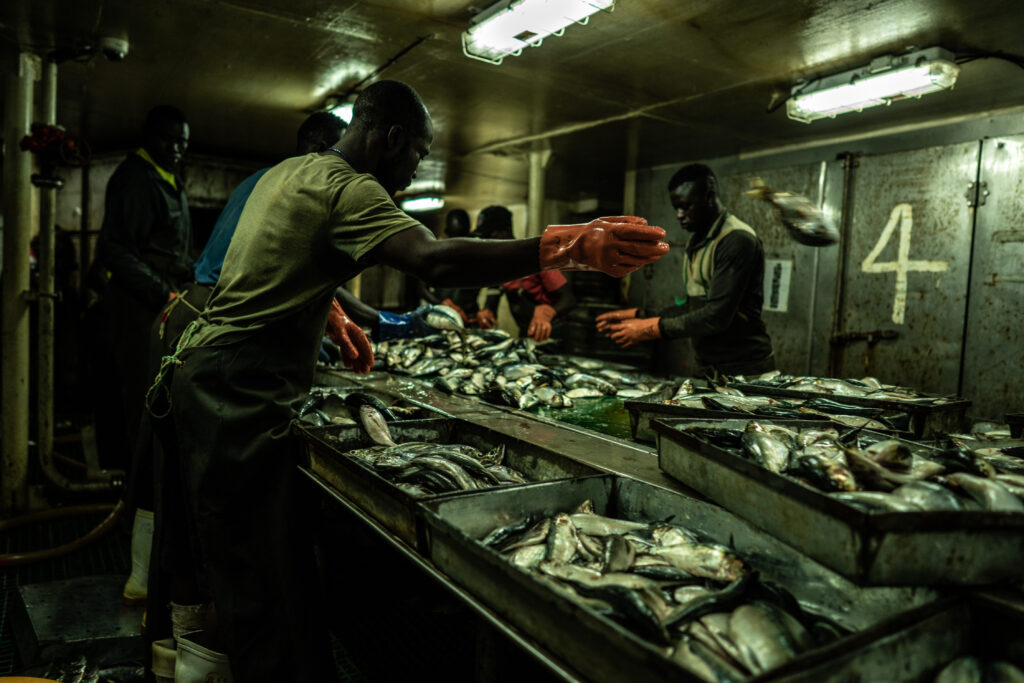
One rainy afternoon in Gambia’s capital city, Banjul, on the coast just north of Gunjur, I sought out Mustapha Manneh, a journalist and an environmental advocate. We met in the white tiled lobby of the Laico Atlantic hotel, decorated with fake potted plants and thick yellow drapes. Pachelbel’s Canon played in an endless loop in the background, accompanied by the plinking of water dripping from the ceiling into half a dozen buckets. Manneh had recently returned to Gambia after a year in Cyprus, where he had fled following the arrest of his father and brother for political activism against Yahya Jammeh, a brutal autocrat who was forced from power in 2017. Manneh, who told me that he hoped to become President one day, offered to take me to the Golden Lead factory.
The next morning, Manneh picked me up in a Toyota Corolla that he had rented for the difficult drive. Most of the road from the hotel to Golden Lead was dirt, which recent rain had turned into a treacherous slalom course of deep and almost impassable craters. The trip was about thirty miles, and took nearly two hours. Over the din of a missing muffler, he prepared me for the visit. “Cameras away,” he cautioned. “No saying anything critical about fish meal.” Just a week before my arrival, some of the same fishermen who had pulled up the plant’s wastewater pipe had apparently switched sides, attacking a team of European researchers who had tried to photograph the facility, pelting them with rocks and rotten fish. Some locals, though they opposed the dumping and resented the export of their fish, did not want foreign media publicizing Gambia’s problems.
We finally pulled up at the entrance of the plant, five hundred yards from the beach, behind a ten-foot wall of white corrugated metal. An acrid stench, like burning orange peels and rotting meat, assaulted us as soon as we got out of the car. Between the factory and the beach was a muddy patch of land, studded with palm trees and strewn with litter, where fishermen were repairing their boats in thatched-roof huts. The day’s catch lay on a set of folding tables, and women were cleaning the fish, smoking it, and drying it for sale. One of the women wore a hijab dripping wet from the surf. When I asked her about the catch, she gave me a dour look and tipped her basket toward me. It was barely half full. “We can’t compete,” she said. Pointing at the factory, she added, “It all goes there.”
The Golden Lead plant consists of several football-field-size concrete buildings, and sixteen silos where dried fish meal and chemicals are stored. Fish meal is relatively simple to make, and the process is highly mechanized. Video footage clandestinely taken by a worker inside Golden Lead reveals a cavernous space—dusty, hot, and dark. At a plant of its size, there are about a dozen men on the floor at any given time. Sweating profusely, several shovel shiny heaps of bonga into a steel funnel. A conveyor belt carries the fish into a vat, where a giant churning screw grinds it into a gooey paste before it enters a long cylindrical oven. Oil is extracted from the goo, and the remaining substance is pulverized into a fine powder and dumped onto the floor in the middle of the warehouse, accumulating into a huge golden mound. After the powder cools, workers shovel it into fifty-kilogram plastic sacks that are stacked from floor to ceiling. A shipping container holds four hundred sacks, and the men fill roughly twenty to forty containers a day.
